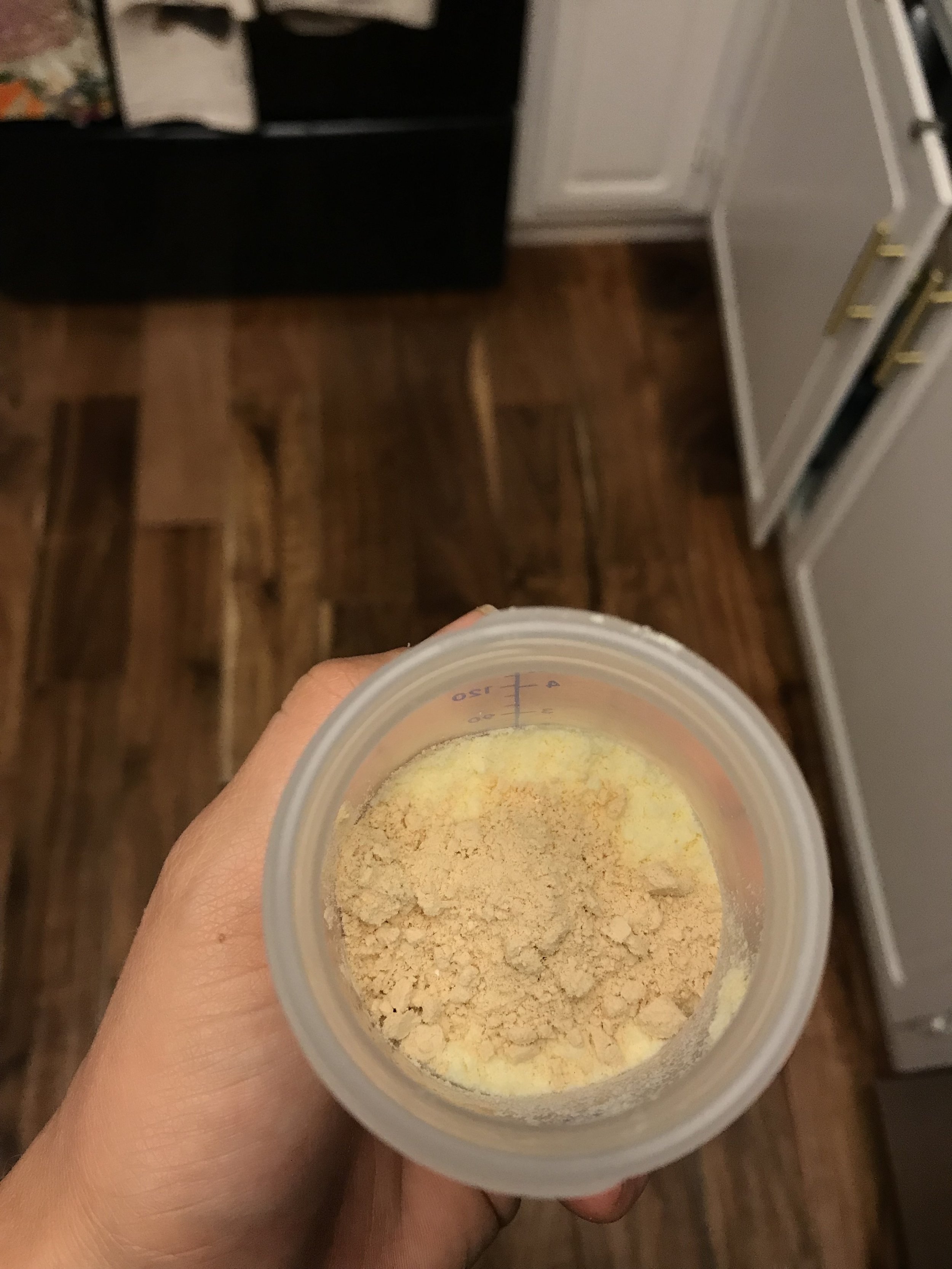Food Allergy Prevention
If there are 2 posts I would love for every single parent to see on this site, it is the ‘How to help a Baby Choking’ video and THIS post. Food allergies can be lifelong and in addition to being altogether cumbersome to live with, they can also be deadly.
I’d love to connect with you on Instagram, where I share home, health and lifestyle tips!
Babies aged 4-11 months need to be introduced safely to dairy, egg, and peanuts to help prevent allergy development.
EARLY ALLERGEN INTRODUCTION CAN BE LIFE SAVING:
Peanut allergies can be reduced by 81% by exposing babies 4-11 months regularly to peanuts. “Allergies to peanuts, tree nuts, fish and shellfish are generally lifelong” (FARE). This means you have a very small window of early allergen introduction that can help reduce the incidence of a LIFELONG and dangerous allergy development.
I spoke to Dr Kari Nadeau, who has a book “The End of Food Allergies.” You can see our conversation here.
For millions of kids in America, peanuts can be life-threatening. You can help reduce the incidence of peanut allergies in your little one by exposing them early.
Has anyone else been curious why the rate of peanut allergies has been increasing over the years?
“For decades allergists have been recommending that young infants avoid consuming allergenic foods such as peanut to prevent food allergies,” notes Professor Lack, the lead investigator for the LEAP study. “Our findings suggest that this advice was incorrect and may have contributed to the rise in the peanut and other food allergies” (LEAPstudy.co.uk).
Because anaphylactic reactions can occur during ANY exposure to an allergen (not just the first exposure), kids with food allergies need to carry Epipens around. “Approximately 20-25 percent of epinephrine administrations in schools involve individuals whose allergy was unknown at the time of the reaction” (Food Allergy Research and Education).
READY. SET. FOOD. REVIEW:
Once you pass the introductory titration packets, you use a daily maintenance dose of dairy, egg and peanut protein powders, mixed into a bottle or snack.
IF THE BABY EXPENSES ARE GETTING TO BE A BIT MUCH:
The best way to introduce early is to introduce a breastfeeding baby, ages 4-11 months to small amounts of the actual foods. You can add powder to their bottles, or applesauce if they are on solids.
If you are anything like me and are also interested in purchasing probiotics and other baby stuff, it starts to really add up. My Jr High math teacher (who doubles as my mom) calculated out 3 grams each of egg, dairy, and peanut butter protein in powdered form.
The EAT Study gave babies starting at 3 months 3 grams each week of peanut, egg, and milk protein. LEAP study gave 6g of peanut. We decided to go with 3 grams of each protein, knowing it was not an issue in the maintenance phase if you put a bit too much powder in the vial. I will be honest, it was a TOTAL pain to calculate the doses (remember the grams of protein in each food does NOT equal the raw weight of each powdered allergen).
After a little work, you can DIY the food allergen prevention system for less!
SHOPPING LIST TO DIY:
Phase 1 of Ready.Set.Food. from Amazon ($17.99)
A scale that can handle 0.01 grams ($9.39)
Reusable Vials (instead of packets) ($11.99)
PB2 (16 oz., $11.97), 0.92 grams per day/vial
Egg Whites Dried (8 oz., $9.99), 0.16 grams per day/vial
Whole Milk Powder (11 oz., $9.46), 2.86 grams per day/vial
IMPORTANT: if you would like to use our conversions, you need to purchase these exact products/versions, otherwise you will need to recalculate on your own products (3 grams of each protein per week). The products listed above are everything you will need to introduce and maintain allergen exposures for the first year of life, or longer if needed.
You can purchase the ingredients to DIY the Maintenance daily packets for less!
HOW TO ASSEMBLE:
Place one clean vial on your scale and zero the scale. Use a very small spoon or knife to add 0.92 grams of PB2, a little bit at a time. Zero the scale. Then add 0.16 grams of Egg Whites Dried. Zero the scale. Then add 2.86 grams of Whole Milk powder. Screw the lid on.
Measuring out the correct weight of protein for each of the dried ingredients.
I would batch these every 12 days. If you want to do a bigger batch less often, you can order more vials. I collect the used vials and when they are all empty, start again! I usually mixed the powders into a bottle (or you can mix into applesauce for older babies). Keep giving the powders until your baby is able to eat solid foods with sufficient amounts of peanut butter, egg, and milk.
The mix of 3 food-proteins can be added daily to a bottle or applesauce for older babies.
HOW TO INTRODUCE ALLERGENS:
These guidelines are intended to help prevent peanut allergies in babies. Do NOT give peanut products to a baby or child who already has an allergy to peanuts.
Before you introduce peanut products, be sure all of these statements are true.
Your baby:
Is 4 months or older
Has NOT had severe eczema or egg allergy.
Has NOT had an allergic reaction to peanuts.
Is healthy right now (no vomiting, diarrhea, cold, cough, or rash).
Also, be sure that you:
Can spend at least 2 hours carefully watching your baby, in case they develop symptoms of an allergic reaction.
Know that allergic reaction symptoms can include: skin rash or hives, vomiting, swelling of the lips or tongue, coughing or wheezing, or starting to look sick.
Start with just a taste. Wait 10 minutes. Watch your baby closely during this time. If there is no allergic reaction, then slowly give the rest (Kaiser Permamente).
Symptoms and signs of a severe allergic reaction may include:
Itching.
Raised, red bumps on the skin (hives or wheals).
Wheezing or difficulty breathing.
Rapid swelling, either in one area or over the entire body. Swelling is most serious when it involves the lips, tongue, mouth, or throat and interferes with breathing.
Belly pain or cramps.
Nausea or vomiting.
Low blood pressure, shock, and unconsciousness.
Call 911 if your baby develops any of these symptoms.
Once Cohen was on solid foods, we discontinued the powders and gave cooked egg, cow’s milk at 12 months, and Bamba peanut butter snacks.
Sources:
Kaiser Permamente: How to Avoid Food Allergies
Food Allergy Research and Education (FARE)
LEAP Study Results broken down by the National Institute of Allergy and Infectious Diseases, part of the National Institutes of Health.
The information in this article is not to be used in place of your relationship with your child’s doctor. I am only sharing the data from our personal research, medical guidelines and our experience.
Any photo included that looks good was taken by Mallory Sparkles Photography (thank you, Mal!!).









